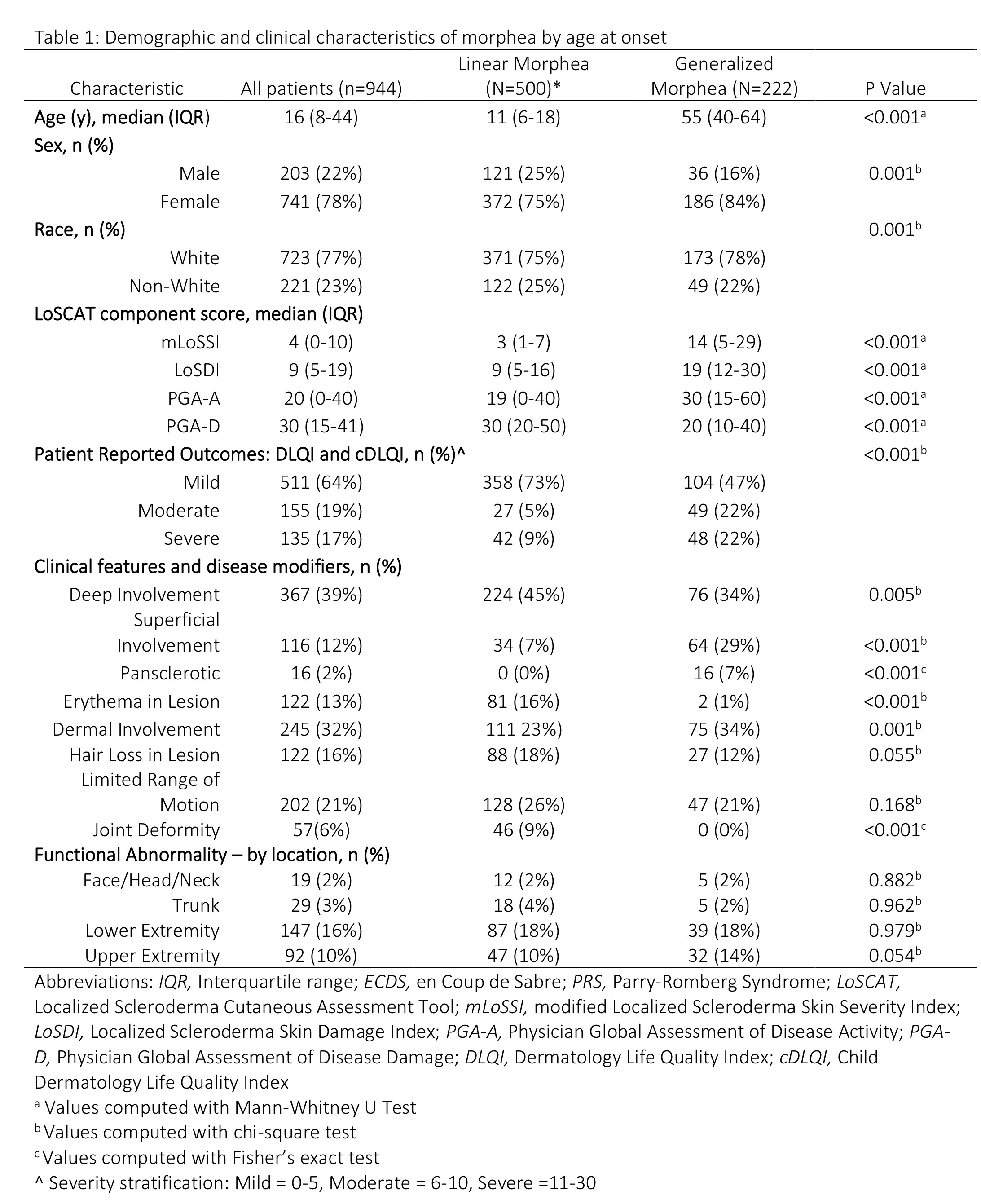Session Information
Date: Monday, November 9, 2020
Session Type: Abstract Session
Session Time: 4:00PM-4:50PM
Background/Purpose: Morphea, or localized scleroderma, is an inflammatory condition of the skin and soft tissue that results in excessive collagen deposition, often producing permanent functional and cosmetic impairment. Morphea affects both adults and children, with approximately 50% of patients having childhood onset disease1,2. Numerous classification schemes for morphea exist, but none have been evaluated for accuracy in categorizing large patient cohorts. We aimed to determine which existing morphea classifications (i.e. Padua criteria, Peterson criteria, and European Classification scheme) best characterized and identified clinically relevant morphea patient subsets using cross sectional analysis of two large patient cohorts.
Methods: We conducted a cross-sectional study of adults and children from two prospective cohorts – The Morphea in Adults and Children (MAC) at UT Southwestern Medical Center (Dallas, Texas) and the National Registry for Childhood-Onset Scleroderma (NRCOS) at University of Pittsburgh (Pittsburgh, PA). Patient demographics, morphea subtype, quality of life measures, disease activity as measured by the Localized Scleroderma Cutaneous Assessment Tool scores during their initial visits were examined.
Results: A total of 944 adults and children were included in this study. The mean (IQR) age of patients was 16 (8-44) years, and 741 of 944 were female. Majority were white individuals and had the linear or generalized subtype. Utilizing the previously published Padua criteria, the majority of the patients were classified to have linear morphea (n=492, 52%), followed by generalized (n=222, 24%), plaque (n=95, 10%), and then mixed (n=3). Overall, the Padua criteria failed to classify 14% of patients that were found to be “indeterminate” in comparison to the Peterson criteria and European classification schemes which failed to classify 39% and 47% of patients, respectively.
Conclusion: The Padua criteria is widely used by clinicians to categorize morphea patients and performed best in classifying patients into groups with cohesive demographic and clinical features. However, it has ambiguities that might lead to misclassification particularly in terms of generalized and pansclerotic morphea and descriptors such as morphea profunda. Consensus based approaches are needed to address these ambiguities in order to develop a unified classification scheme.
References
- Leitenberger JJ, Cayce RL, Haley RW, Adams-Huet B, Bergstresser PR, Jacobe HT. Distinct autoimmune syndromes in morphea: a review of 245 adult and pediatric cases. Arch Dermatol. 2009;145(5):545-550.
- Marzano AV, Menni S, Parodi A, et al. Localized scleroderma in adults and children. Clinical and laboratory investigations on 239 cases. Eur J Dermatol. 2003;13(2):171-176.
 Table 1: Demographic and clinical characteristics of morphea by subtype
Table 1: Demographic and clinical characteristics of morphea by subtype
To cite this abstract in AMA style:
Zhu J, Prasad S, Schollaert-Fitch K, Haley R, Torok K, Jacobe H. Characterizing Morphea Subsets Using a Multi-center, Prospective, Cross-sectional Analysis [abstract]. Arthritis Rheumatol. 2020; 72 (suppl 10). https://acrabstracts.org/abstract/characterizing-morphea-subsets-using-a-multi-center-prospective-cross-sectional-analysis/. Accessed .« Back to ACR Convergence 2020
ACR Meeting Abstracts - https://acrabstracts.org/abstract/characterizing-morphea-subsets-using-a-multi-center-prospective-cross-sectional-analysis/
